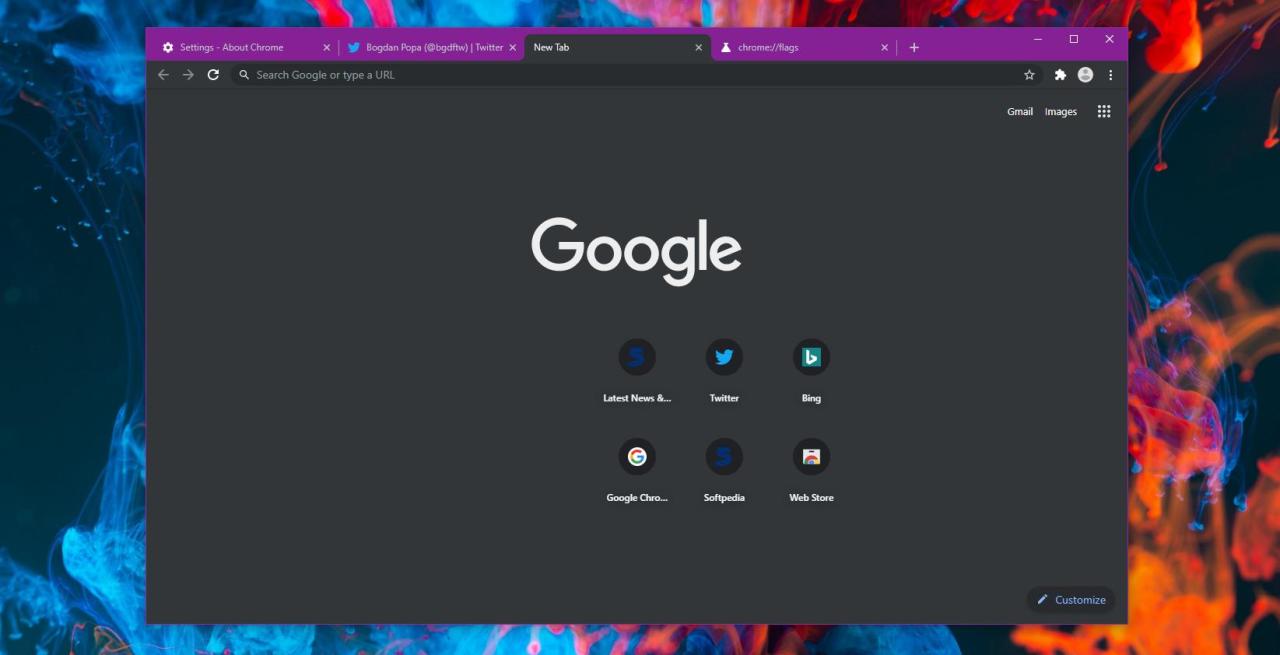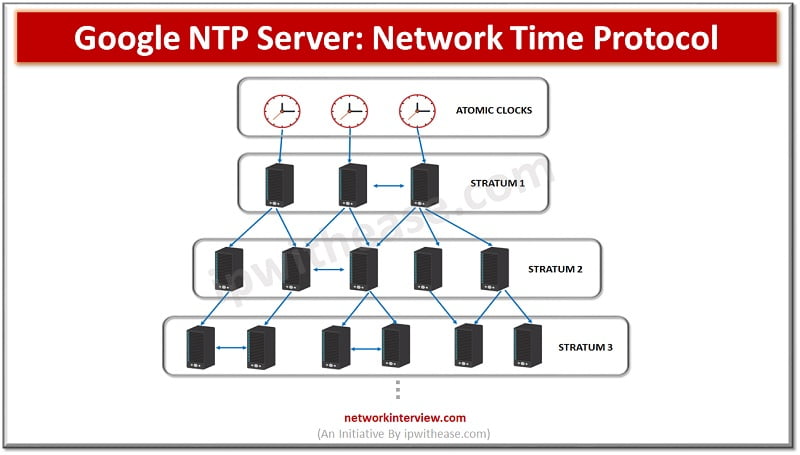Google NTP, at its core, is a vital component of Google’s infrastructure, ensuring precise time synchronization across its vast network of servers and services. This crucial technology, rooted in the Network Time Protocol (NTP), underpins the seamless operation of Google’s search engine, email, cloud services, and countless other applications.
The accuracy of time is paramount for Google, as it affects everything from search results to user authentication. Google’s NTP servers, strategically distributed across the globe, play a critical role in maintaining this accuracy. These servers are constantly monitored and secured, ensuring that Google’s services remain reliable and efficient.
Introduction to Google NTP
Network Time Protocol (NTP) is a fundamental networking protocol designed to synchronize clocks across computer systems. Its primary purpose is to ensure accurate timekeeping within a network, facilitating seamless communication and data integrity.
Google, being a global technology giant with a vast and complex infrastructure, heavily relies on NTP for its diverse services. From search engines and email to cloud platforms and online applications, precise time synchronization is paramount for Google’s operations.
The Importance of Accurate Time Synchronization in Google’s Infrastructure
Accurate time synchronization is crucial for Google’s infrastructure for several reasons:
- Consistent Data Ordering: In distributed systems like Google’s, events occurring across multiple servers must be ordered correctly. NTP ensures that timestamps associated with events are consistent, preventing discrepancies and ensuring data integrity.
- Resource Allocation and Management: Google’s vast data centers require efficient resource allocation and management. Accurate time synchronization helps optimize resource utilization, preventing over-provisioning and ensuring efficient performance.
- Security and Authentication: NTP plays a vital role in security and authentication mechanisms. Time-based authentication protocols, such as Kerberos, rely on accurate time synchronization to verify user identities and protect sensitive information.
- Performance Monitoring and Analysis: Google’s performance monitoring systems rely on accurate timestamps to analyze system behavior, identify bottlenecks, and troubleshoot issues.
Google NTP Servers

Google operates a global network of NTP servers that provide highly accurate time synchronization services to millions of users worldwide. These servers are crucial for various applications, including internet communication, financial transactions, and scientific research.
Geographical Distribution of Google NTP Servers
Google NTP servers are strategically distributed across the globe to ensure optimal performance and accessibility for users in different regions. This distribution helps minimize latency and improve time synchronization accuracy.
- Google’s NTP servers are located in various data centers around the world, including North America, South America, Europe, Asia, and Australia.
- This wide distribution ensures that users can connect to a nearby server, reducing network delays and improving time synchronization accuracy.
Security Measures for Google NTP Servers
Google employs robust security measures to protect its NTP servers from unauthorized access and malicious attacks. These measures include:
- Access Control: Google implements strict access control measures to limit access to its NTP servers to authorized personnel.
- Network Security: Google’s NTP servers are protected by firewalls and other network security devices to prevent unauthorized access and malicious traffic.
- Regular Security Audits: Google regularly audits its NTP servers to identify and address any potential security vulnerabilities.
- Monitoring and Response: Google continuously monitors its NTP servers for any suspicious activity and has a rapid response plan in place to address any security incidents.
Key Google NTP Servers and their Roles
Google operates a range of NTP servers, each with a specific role in providing time synchronization services.
- Public NTP Servers: These servers are publicly accessible and provide time synchronization services to anyone on the internet. Some popular examples include:
- time.google.com
- pool.ntp.org
- Private NTP Servers: These servers are used internally by Google to synchronize time across its own infrastructure, including its data centers and applications.
Google NTP Client Configuration
Configuring NTP clients to use Google NTP servers is essential for maintaining accurate time synchronization within a Google environment. This ensures seamless operation of applications and services, enhances security, and facilitates reliable data logging and analysis.
Best Practices for Configuring NTP Clients in a Google Environment
Implementing best practices for configuring NTP clients in a Google environment ensures optimal time synchronization and system performance. Here are key considerations:
- Prioritize Google NTP Servers: Configure NTP clients to use Google NTP servers as their primary time sources. Google’s global network of NTP servers offers high accuracy, reliability, and scalability, making them ideal for time synchronization within Google environments.
- Utilize Multiple NTP Servers: Implement redundancy by configuring clients to use multiple Google NTP servers. This ensures continued time synchronization even if one server becomes unavailable.
- Configure Server Preferences: Prioritize specific Google NTP servers based on their geographic proximity and performance. This minimizes network latency and improves time accuracy.
- Set Appropriate Timeouts: Define reasonable timeouts for NTP client requests to Google servers. This prevents unnecessary delays and ensures efficient time synchronization.
- Enable NTP Monitoring: Implement monitoring tools to track NTP client performance and identify potential issues. This allows for proactive troubleshooting and ensures accurate time synchronization.
- Regularly Review Configuration: Periodically review and update NTP client configurations to reflect changes in network topology, server availability, and best practices.
Sample NTP Configuration File for a Google Client
The following is a sample NTP configuration file for a Google client using the ntp.conf format:
server 216.239.32.10 # Google public NTP server in North America
server 216.239.35.10 # Google public NTP server in Europe
server 216.239.38.10 # Google public NTP server in Asia
server 216.239.36.10 # Google public NTP server in Australia# Set the preferred server based on geographic location
prefer 216.239.32.10# Define the maximum time difference allowed
driftfile /var/lib/ntp/drift# Set the maximum number of NTP servers to query
maxpoll 4# Configure the poll interval for NTP requests
minpoll 4
maxpoll 9# Define the synchronization interval for NTP requests
requesttimeout 10# Set the logging level for NTP operations
# (Higher levels provide more verbose logging)
logconfig /var/log/ntp.log# Specify the time zone for the client
# (Replace “America/Los_Angeles” with the actual time zone)
timezone “America/Los_Angeles”
NTP Time Synchronization in Google Cloud
Google Cloud Platform (GCP) relies heavily on accurate time synchronization for various services and applications. This is achieved through the use of the Network Time Protocol (NTP), which ensures that all systems within the GCP environment have a consistent and accurate time reference.
NTP Configuration Options in GCP
GCP offers several NTP configuration options, each catering to different needs and deployment scenarios. These options provide flexibility and control over how time synchronization is managed within the GCP environment.
- Default NTP Configuration: By default, GCP instances utilize the Google public NTP servers for time synchronization. This is a straightforward and convenient option, particularly for new deployments where minimal configuration is desired. However, it relies on external servers and might not be ideal for scenarios demanding higher levels of accuracy or security.
- Custom NTP Servers: GCP allows users to configure custom NTP servers, enabling greater control over the time source. This is beneficial for situations where specific NTP servers are preferred, such as those within a private network or those offering enhanced security features. By using custom servers, users can ensure time synchronization aligns with their specific security and performance requirements.
- Internal NTP Servers: GCP provides the option to deploy and manage internal NTP servers within the cloud environment. This approach offers increased control and isolation, as it eliminates reliance on external time sources. It is particularly suitable for scenarios requiring a high level of security or for environments with complex time synchronization needs.
Troubleshooting NTP Issues in GCP
Troubleshooting NTP issues in GCP involves a systematic approach to identify and resolve any discrepancies or errors in time synchronization.
- Check NTP Server Connectivity: Ensure that the GCP instances can reach the configured NTP servers. This can be done by verifying network connectivity and checking for any firewall rules that might be blocking NTP traffic.
- Review NTP Configuration: Verify that the NTP configuration settings are correct and consistent across all instances. This includes checking the NTP server addresses, time zone settings, and other relevant parameters.
- Analyze NTP Logs: Review the NTP logs on both the client and server instances to identify any error messages or unusual behavior. These logs can provide valuable insights into the root cause of NTP issues.
- Utilize Monitoring Tools: GCP offers various monitoring tools that can track NTP performance and identify potential issues. These tools provide real-time visibility into the health and accuracy of time synchronization within the GCP environment.
Google NTP and Security
Network Time Protocol (NTP) is essential for maintaining accurate time across systems, but it also presents potential security vulnerabilities. Google’s NTP implementation incorporates security measures to mitigate these risks and ensure the reliability and integrity of time synchronization.
Secure NTP Configurations, Google ntp
Secure NTP configurations are crucial for protecting against various security threats.
- Restricting Access to NTP Servers: Limiting access to NTP servers to authorized clients helps prevent unauthorized time synchronization and potential manipulation of time settings. This can be achieved through firewall rules and access control lists.
- Authentication: NTP authentication mechanisms like symmetric key authentication (using the “auth” in the ntp.conf file) help verify the identity of NTP servers and prevent spoofing attacks. Authenticating NTP servers ensures that clients are receiving time data from trusted sources.
- Using Secure Ports: By default, NTP operates on UDP port 123. However, using a secure port like TCP port 123 can enhance security by adding an extra layer of protection against potential attacks.
- Monitoring and Auditing: Regularly monitoring NTP server logs and network traffic for suspicious activity is essential for identifying and addressing potential security breaches. Auditing logs helps track changes to NTP configurations and identify any unauthorized access attempts.
NTP Monitoring and Management

Effective NTP monitoring and management are crucial for maintaining accurate time synchronization within a Google environment. By understanding and implementing best practices, you can ensure reliable timekeeping, enhance the performance of your services, and prevent potential issues that could impact your applications and infrastructure.
Monitoring NTP Performance
Regularly monitoring NTP performance is essential for identifying potential issues and ensuring the accuracy of time synchronization. Google Cloud provides several tools and methods for monitoring NTP performance.
- Cloud Monitoring: Google Cloud Monitoring provides real-time and historical metrics for NTP servers and clients, allowing you to track key performance indicators (KPIs) such as delay, offset, and jitter. This helps you identify any deviations from expected performance levels and investigate potential issues.
- Stackdriver Logging: Stackdriver Logging captures logs from NTP servers and clients, providing detailed information about NTP operations, including timestamps, source addresses, and any errors or warnings. Analyzing these logs can help you pinpoint the root cause of NTP problems.
- NTP Tools: You can use command-line tools such as ntpq and ntpstat to gather information about NTP servers and clients. These tools provide detailed statistics about the NTP synchronization process, including the current time offset, the number of peers, and the status of the NTP association.
Alternatives to Google NTP
While Google’s NTP servers are a reliable choice, other reputable alternatives exist. Choosing the best NTP server depends on your specific requirements, including geographic location, security considerations, and network performance.
Popular NTP Servers
Several popular NTP servers provide accurate time synchronization services worldwide. These servers are maintained by various organizations, including universities, research institutions, and government agencies.
- National Institute of Standards and Technology (NIST): NIST offers a network of highly accurate time servers located in the United States. These servers are known for their stability and reliability, making them a popular choice for organizations requiring high-precision time synchronization.
- University of Delaware (UDel): The University of Delaware maintains a network of NTP servers that are widely used for time synchronization. These servers are known for their accuracy and availability, making them a reliable choice for various applications.
- Pool.ntp.org: This is a large pool of NTP servers maintained by volunteers worldwide. This pool provides redundancy and ensures high availability, making it a suitable choice for organizations with global operations.
- Time.gov: This service, maintained by the United States Naval Observatory, offers accurate time synchronization for the United States. Time.gov is a reliable source for accurate time data, particularly for organizations in the United States.
Advantages and Disadvantages of Using Alternative NTP Servers
Each NTP server has its own advantages and disadvantages, which should be considered when selecting an appropriate server.
- Geographic Location: Choosing an NTP server close to your physical location can minimize network latency and improve time synchronization accuracy. For example, if you are in Europe, using a European-based NTP server like the ones maintained by the University of Delft or the German Research Center for Geosciences (GFZ) can provide better accuracy than using a server located in the United States.
- Security Considerations: Security is a critical factor when choosing an NTP server. Some servers offer additional security features, such as authentication and encryption, to protect against potential attacks. For example, the NIST servers support authentication and encryption, making them a more secure option for sensitive applications.
- Network Performance: The performance of an NTP server can impact the accuracy and stability of time synchronization. Choosing a server with high availability and low latency can ensure consistent and reliable time synchronization. For example, the Pool.ntp.org pool provides high availability and redundancy, making it a reliable choice for organizations with critical time synchronization requirements.
Selecting the Appropriate NTP Server
Choosing the best NTP server depends on your specific needs and requirements. Consider the following factors:
- Accuracy: The accuracy of the NTP server is crucial for applications requiring precise time synchronization. For example, financial institutions require high-accuracy time synchronization for transaction processing and regulatory compliance.
- Availability: The availability of the NTP server is essential for continuous time synchronization. Organizations with critical applications should choose servers with high availability and redundancy, such as those in the Pool.ntp.org pool.
- Security: Security is a critical factor when choosing an NTP server. For sensitive applications, organizations should consider using servers that support authentication and encryption. For example, NIST servers offer authentication and encryption, providing a more secure option for critical applications.
- Geographic Location: Choosing an NTP server close to your physical location can minimize network latency and improve time synchronization accuracy. For example, if you are in Europe, using a European-based NTP server like the ones maintained by the University of Delft or the German Research Center for Geosciences (GFZ) can provide better accuracy than using a server located in the United States.
- Cost: Some NTP servers may require a subscription fee, while others are free to use. The cost of the NTP server should be considered, especially for organizations with limited budgets.
NTP in the Future

The world of NTP is constantly evolving, driven by the increasing demand for precise time synchronization across diverse networks and applications. Emerging trends and technological advancements are shaping the future of NTP, particularly within Google’s infrastructure.
Potential Developments in Google’s NTP Implementation
The future of Google’s NTP implementation holds exciting possibilities, driven by the company’s commitment to innovation and the ever-growing need for robust time synchronization. Google’s NTP implementation is likely to benefit from the following advancements:
- Enhanced Security: Google is actively exploring advanced security measures to further strengthen its NTP infrastructure. This includes investigating new cryptographic algorithms and protocols to mitigate vulnerabilities and enhance the integrity of time synchronization. Google is also exploring the use of blockchain technology to create a decentralized and tamper-proof time source.
- Improved Scalability: Google’s NTP infrastructure needs to scale efficiently to handle the increasing demands of its global network. The company is investigating innovative techniques to optimize NTP server performance, such as distributed ledger technology, to enhance scalability and ensure consistent time synchronization across vast networks.
- Integration with Cloud Services: Google’s NTP implementation is likely to be tightly integrated with its cloud services, enabling seamless time synchronization across its cloud infrastructure. This integration will facilitate the development of new features and services that rely on precise timekeeping, such as real-time analytics, financial transactions, and high-frequency trading.
Long-Term Implications of NTP for Google’s Infrastructure
NTP plays a critical role in maintaining the stability and reliability of Google’s infrastructure. As Google’s services and applications continue to evolve, the importance of NTP will only grow. Here are some long-term implications:
- Enhanced Service Availability: Precise time synchronization is crucial for maintaining the availability and performance of Google’s services. NTP ensures that all components of Google’s infrastructure operate in sync, minimizing disruptions and ensuring a seamless user experience.
- Improved Data Integrity: Accurate timekeeping is essential for data integrity and consistency. NTP ensures that timestamps associated with data are reliable, facilitating accurate data analysis and reporting. This is particularly important for applications that rely on real-time data, such as financial trading and online gaming.
- Security Enhancements: NTP plays a vital role in enhancing security by enabling the authentication and authorization of users and devices. Accurate time synchronization ensures that timestamps used for security protocols are valid, preventing spoofing and other attacks.
Final Thoughts: Google Ntp
From the fundamentals of NTP to its specific implementation within Google’s ecosystem, this exploration has illuminated the crucial role of accurate time synchronization in today’s digital world. Google’s commitment to NTP, reflected in its robust server infrastructure and comprehensive security measures, ensures the smooth operation of its services and the seamless experience for billions of users worldwide.
Google NTP, or Network Time Protocol, is a crucial element in maintaining accurate time across computer systems. But while keeping your devices synchronized is important, sometimes you need a little more creativity! For some fun Valentine’s Day inspiration, check out these valentines craft ideas , which will help you create personalized gifts that are sure to be appreciated.
After all, a little bit of heartfelt artistry can make even the most technical of tasks feel more special.
